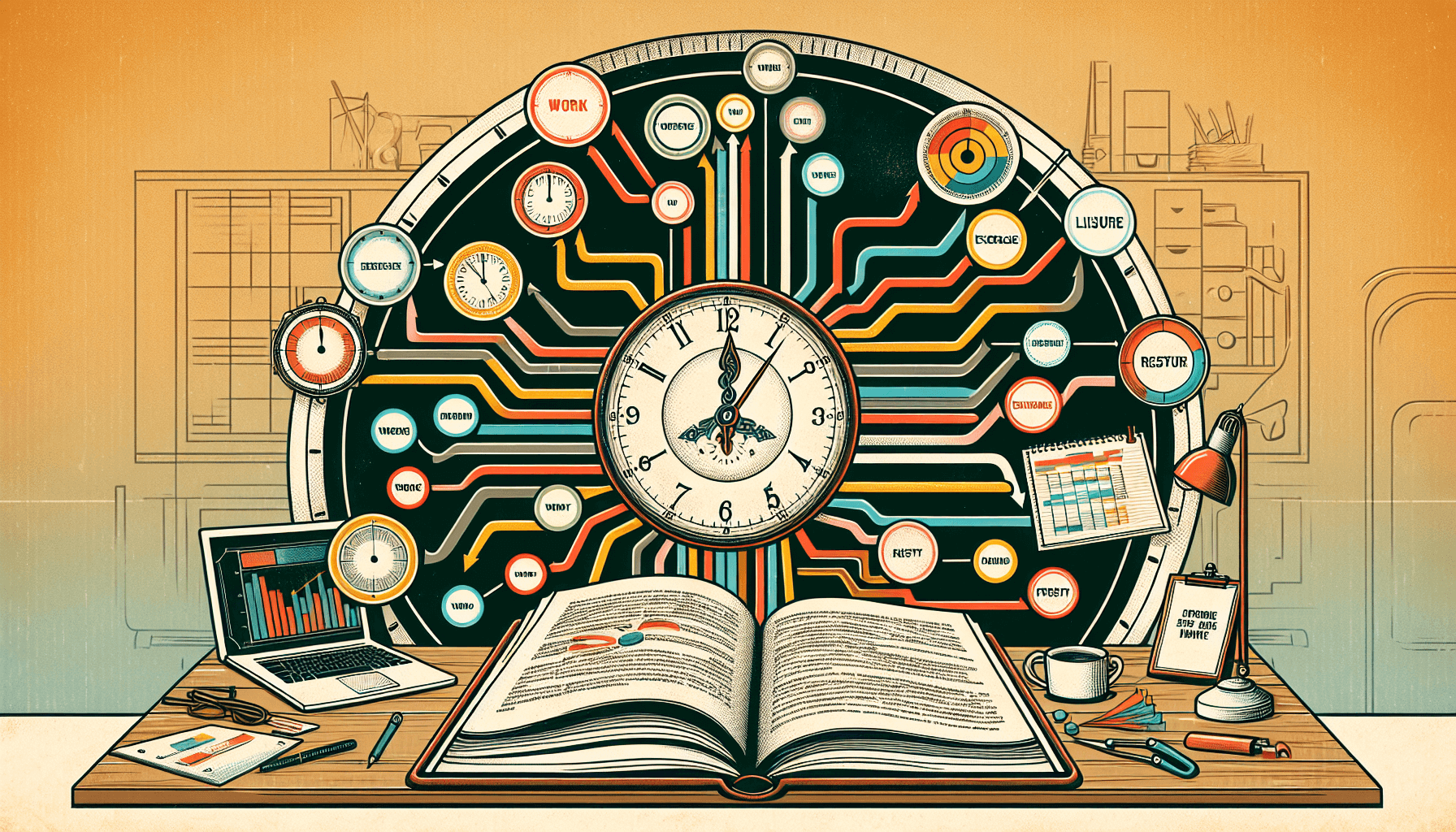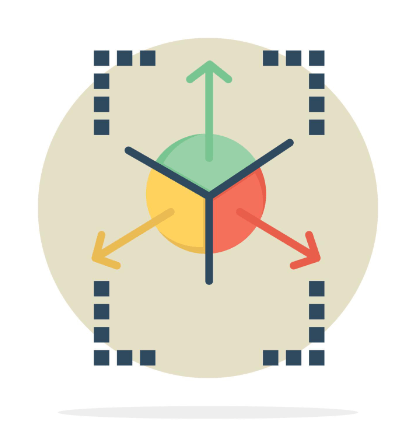ClevGuard Support: Monitor Devices with Others' Permission.
Ever feel overwhelmed managing work and personal tasks? Meet time mapping – a visual way to organize your activities. It helps you pinpoint priorities, improve time management, and achieve work-life balance. More than just tracking time, it breaks tasks into blocks for better productivity.
This guide teaches you how to create and use a time map, boosting your task and workforce management. With time mapping, you're not just managing time; you're adopting a structured approach for significant productivity improvements.
Time Mapping 101: Your Guide to Efficient Time Management
Part 1. Understanding Time Mapping
Part 2. Benefits of Time Mapping
Part 3. How to Create a Time Map
Part 4. Incorporating Time Mapping into Your Daily Routine
Part 5. Advanced Time Mapping Strategies
Understanding Time Mapping
To fully harness the power of time mapping, it's essential to first comprehend its methodology and application. Here's how you can begin to understand and apply time mapping to enhance your productivity:
-
Personal Habits and Patterns: Recognize your own habits, productive times, and working patterns. You must separate personal and professional tasks and prioritize them accordingly.
-
Creating Time Blocks: Organize your tasks into specific time blocks. This involves assigning a designated time period to each task or group of tasks, which can be visualized using a physical calendar or an online tool.
-
Review and Adjust: Regularly review and adjust your time map. As you progress, your priorities and tasks may evolve. This step ensures that your time map remains relevant and continues to serve its purpose of improving your efficiency and effectiveness across various aspects of life.
By following these steps, you can create a comprehensive time map that not only schedules work tasks but also includes personal activities, such as family time and social engagements.
Benefits of Time Mapping
Time mapping serves as a catalyst for enhanced productivity and well-organized living. Here are the multifaceted benefits that come with its adoption:
-
Enhanced Control and Prioritization: By visually mapping out time, you can take command of your schedule, identify tasks that consume disproportionate amounts of time, and make informed decisions about how to allocate your hours more effectively. This leads to a prioritized and more productive workflow.
-
Minimization of Procrastination: Allocating specific time blocks for tasks through time mapping minimizes the tendency to procrastinate. This method ensures that each task has its designated slot, optimizing your daily efficiency and enhancing productivity.
-
Alignment with Long-Term Goals: Time mapping is not just about managing daily tasks; it's also about aligning your activities with your long-term aspirations. By doing so, you increase the likelihood of making consistent progress towards achieving your objectives.
-
Stress Reduction: Proactive planning and scheduling reduce the stress associated with last-minute arrangements or overlooked deadlines. Time mapping promotes a forward-thinking mindset, allowing you to plan ahead and avoid unnecessary pressure.
-
Mindful Living: With an acute awareness of how time is spent, time mapping encourages intentional living and mindful decision-making. This awareness leads to a life lived with purpose and direction.
-
Accountability and Continuous Improvement: The practice of time mapping fosters accountability for how you utilize your time and honor your commitments. Moreover, by regularly reviewing and adjusting your time map, you can identify areas for enhancement and adapt to changing priorities, facilitating continuous improvement.
-
Optimized Energy Management: Strategic breaks and rest periods, when integrated into your time map, help in managing your energy levels, thus preventing burnout and maintaining a high level of productivity.
Incorporating time mapping into your life is not just about improving efficiency at work; it extends to fostering creativity, wellness, and personal growth in various spheres of life, including creative endeavors, learning, and social relationships.
How to Create a Time Map
Creating a time map is a strategic method to enhance productivity and manage your time more efficiently. Here's how to get started:
-
Assess and List Activities: Begin by evaluating how you currently spend your time. Note down all your activities, both professional and personal, to get a clear picture of where your time goes. Prioritize these tasks based on their importance and urgency to ensure that your time map reflects your goals and commitments.
-
Organize with Time Blocks: Once you have your list, start time blocking, which means assigning specific chunks of time to each task or group of tasks. This step is crucial for creating a structured and manageable schedule. Utilize tools like Google Calendar or dedicated software such as Timeular to assist in this process, making it both simple and efficient.
-
Differentiate with Colors: To make your time map visually intuitive, use colors to differentiate between various types of activities. This will help you quickly identify and transition between tasks related to work, personal hobbies, or family commitments.
-
Review and Optimize: Regularly review your time map to ensure it aligns with your evolving priorities and responsibilities. Adjust your time blocks as needed to optimize your schedule for maximum productivity. Utilize the insights from tools such as Homebase to track your progress and make informed adjustments.
Remember, the goal of time mapping is not just to manage your work tasks but also to include personal time for meals, breaks, and leisure, contributing to a well-rounded and fulfilling daily routine.
Incorporating Time Mapping into Your Daily Routine
To seamlessly integrate time mapping into your daily routine, consider leveraging a variety of digital tools that cater to your organizational needs. Here's how to make the most out of these applications for optimal task management and productivity:
-
Selecting the Right Tools: Choose from a range of platforms like Apploye, Microsoft Outlook, or Todoist for their robust features tailored to time mapping. For a more visual approach, TimeTree and Google Calendar are excellent for creating and sharing your time map across devices.
-
Tracking and Analysis: Utilize the analytical capabilities of Google Sheets or Microsoft Excel for a deeper dive into your time usage. Specialized software like MoniVisor offers tracking features that can help you understand where your time is going, allowing for more informed adjustments.
-
Routine Reviews: Make it a habit to review and adjust your time map regularly. This ensures that your time map remains a true reflection of your priorities and adapts to any changes in your personal or professional life.
Remember, the purpose of time mapping is to serve as a flexible guide that helps you manage your time more effectively. It's not meant to be a rigid schedule, but rather a dynamic tool that evolves with you, ensuring you are making the most out of the available time for increased productivity and effective workforce management. Regular refinement and adjustment based on actual time spent on tasks and shifting priorities are key to continual improvement.
Advanced Time Mapping Strategies
To truly master the art of time mapping and take your productivity to the next level, consider implementing these advanced strategies:
-
Long-Term Strategic Planning: Incorporate long-term planning into your time mapping to ensure that daily activities contribute towards your overarching goals. By extending your time map to include future weeks, months, or even years, you align your daily tasks with long-term objectives, fostering efficiency and a clear direction in your personal and professional life.
-
Habit Stacking and Time Bundling: Enhance your efficiency by habit stacking, which involves adding new tasks to existing routines. Similarly, time bundling groups similar tasks together, reducing the time spent transitioning between different types of work modes. These techniques optimize your schedule by minimizing downtime and leveraging the power of habit.
-
Regular Evaluation and Adjustment: To maintain an effective time management system, it's essential to regularly evaluate and adjust your time map. This dynamic approach allows you to respond to changes in priorities and responsibilities, ensuring that your time map remains a reliable tool for managing your time.
By adopting these advanced time mapping strategies, you can identify performance gaps, allocate resources wisely, and create timelines that are both manageable and realistic.
Conclusion
In our journey through time mapping, we've unraveled its essential role in transforming our daily lives, enhancing productivity, and fostering balance. By consciously assigning time blocks to diverse tasks, we gain the ability to prioritize, reduce procrastination, and align our activities with life goals. Time mapping isn't just about professional efficiency; it acts as a catalyst for personal growth and a mindful approach to our precious hours.
FAQs
Time blocking involves reserving specific time slots on your calendar for immediate tasks, ensuring that you complete high-priority work first and leave less critical tasks for later. This keeps your workday structured. Time mapping, on the other hand, provides a broader view of how you utilize your time both professionally and personally.
To create a personal time map, begin by listing your activities and categorizing them accordingly. Once you have your categories, assign each activity to the right one. Be mindful to not fall prey to Parkinson's Law, which suggests that work expands to fill the time available for its completion. Regularly review and adjust your time map to ensure it remains effective.
Time management refers to how we organize and use our time. Our productivity is determined by the tasks we accomplish within a given timeframe. The more efficiently we use our time and the fewer distractions we encounter, the more progress we can make on our projects.









